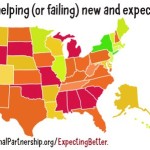Doesn’t everyone have to get family and medical leave benefits? Isn’t that the law?
Most Americans are familiar with the Family Medical Leave Act, or FMLA, signed into law in 1993. This important piece of legislation was a big step towards prioritizing families and protecting workers. However, if you think FMLA is all you need to know about family leave and your job, you may be surprised to learn what is, and more importantly what is not, included in the FMLA.
While the law does require companies to provide unpaid leave to some employees, the law does not require employers to offer any paid leave at all. In addition, the law leaves numerous loopholes for employers, leaving about 40% of workers left out of this coverage completely. Many employees who have been at a company less than a year, are not full-time employees, or work for a company with less than 50 employees, are not eligible for any type of leave at all.
The lucky 60% or so workers that are covered by FMLA often find this benefit is only helpful if you can afford it. In fact, only about 12% of Americans have access to paid leave through their employers. Many employees are surprise to find out how little financial support they actually get from their employers when they need to take leave. Most maternity and paternity leaves are actually a patchwork of vacation days, sick days and disability leave. Once those days run out, any additional time off is often unpaid.
So the next time you go into a job interview, or a promotion cycle with your company, ask what their family and medical leave policy is. We ask about vacation and sick time, why can’t we ask about family leave? You cannot assume FMLA or another law ensures your employer will offer an adequate leave policy for you and your family. If we all speak up together, we can help everyone understand their benefits. It’s time to get smart on leave because family matters.








Comments (0)